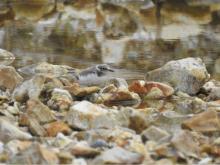Quarry sites are great places for birds of prey particularly buzzards and kestrels, a new RSPB study has shown.
Teaming up with
Buzzards and kestrels remain in the top two spots and are reported at over a third of sites.
The RSPB and Cemex “are delighted to be helping kestrels as they are suffering a widespread decline throughout the UK.” Since 1995 their numbers have dropped by 28%.
Quarries, while operational, offer great alternatives to the traditional cliff-face homes for many birds of prey. Once exhausted of minerals and restored, the quarry site can provide a diversity of habitats to encourage and enhance flora, fauna and wildlife, thus minimizing the impact of the quarrying operations on the environment and increasing the biodiversity of the area.
Alan Smith, a Cemex quarry manager says: “I have been working for CEMEX for the past 27 years. I am still excited to see the different species that visit or are residential on our quarry. Over the years we have thought about our method of working and restored areas to accommodate some species particularly sand martins and little ringed plovers.
“I have seen a large increase in the common buzzard and summer visitors include hobby which like to hunt the sand martins. We also had a visit from two red kites this year, which was great.”
Other findings of the survey showed that Peregrine falcons are breeding on several quarry sites again this year, with at least 14 chicks fledging successfully.
Peregrines are generally doing well in the UK but this hasn’t always been the case, and for the first time, marsh harriers were reported on quarries. At least two chicks fledged successfully on one of the nesting sites. Marsh harriers have also made a great comeback since the 1970s.
RSPB’s Cemex biodiversity advisor, Dr Sam Tarrant, says: “Against a backdrop of cuts in public expenditure, initiatives like this become all the more important. Bringing together the expertise of Cemex UK and the RSPB means that we have a team which deliver real biodiversity benefits and create special areas that local communities can enjoy.”







